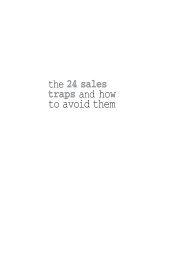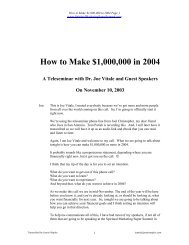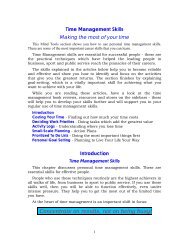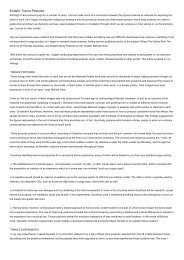Executive Coaching - A Guide For The HR Professional.pdf
Executive Coaching - A Guide For The HR Professional.pdf
Executive Coaching - A Guide For The HR Professional.pdf
You also want an ePaper? Increase the reach of your titles
YUMPU automatically turns print PDFs into web optimized ePapers that Google loves.
60 EXECUTIVE COACHING<br />
............................<br />
the opportunity to forge the chemistry essential to a good coaching<br />
relationship. <strong>The</strong> ability of the coach to see facial expressions<br />
and body language is important for the coach to get to know<br />
the client. It also allows the coach to create a visual picture of the<br />
client, to more accurately interpret the client’s communications,<br />
and to see exactly what others also see when they engage with the<br />
client.<br />
Assessments<br />
<strong>The</strong> electronic administration, scoring, and feedback of tests and<br />
assessments has made data-gathering more efficient and rapid.<br />
Because feedback from assessments still requires some careful interpretation,<br />
however, many coaches will provide an overall summary<br />
from the various data reports. <strong>The</strong> summary can then be delivered<br />
either electronically to the client, in face-to-face sessions, or in<br />
some combination of both.<br />
Cautions<br />
Over time, the coaching with an individual client might shift from<br />
face-to-face sessions to a greater preponderance of electronic coaching.<br />
In those circumstances, the coach must pay extra attention to<br />
the value of the message content. In making the comparisons<br />
between face-to-face and electronic coaching, the coach has to<br />
monitor the quality of the interactions. Are topics covered in the<br />
same depth? Is the client using the same richness of language? Does<br />
the client express feelings as readily? <strong>The</strong> coach should solicit feedback<br />
to find out whether the client is comfortable with the quality<br />
of the interactions via email.<br />
Summary<br />
In this chapter you have been shown a logical progression of the<br />
steps in the coaching process: contracting, goal setting, assessing<br />
results, action planning, and evaluation. You have learned about the

















